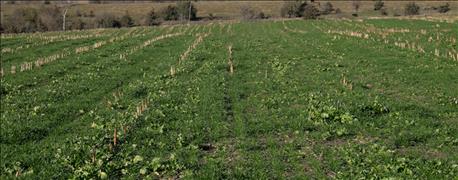July 28, 2016

Iowa Secretary of Agriculture Bill Northey is reminding Iowa farmers that funds are still available to help install practices focused on protecting water quality. Practices eligible for this funding are cover crops, no-till or strip till, or using a nitrification inhibitor when applying fertilizer.
The cost-share rate for first-time users of cover crops is $25 per acre, no-till or strip till are eligible for $10 per acre and farmers using a nitrapyrin nitrification inhibitor when applying fall nitrogen fertilizer can receive $3 per acre. Farmers are eligible for cost share on up to 160 acres.

REMINDER: It’s time for farmers and landowners to apply for cost-share funding to help pay for cover crops, no-till/strip till and other conservation practices. Funding is available through the Iowa Water Quality Initiative.
Apply by August 1 and you will have priority for funding
First-time users who apply by August 1 will be the first applications funded. First-time users who apply after August 1 will still receive priority consideration, but funds will also be made available to farmers who have used cover crops in the past for cost-share assistance at $15 per acre.
“We already have $1.6 million in applications from more than 700 farmers interested in trying a new practice on their farm to better protect water quality. However, we do have some funds available, both for first-time users and those interested in trying cover crops again. I hope interested farmers will contact their local Soil and Water Conservation District soon to learn more about the assistance that is available,” Northey adds.
Check into additional opportunities for cost-share funding
Farmers are also encouraged to visit their local Soil and Water Conservation District office to inquire about additional opportunities for cost-share funding through other programs offered at their local SWCD.
The cost share assistance was announced on May 11. Since then, Iowa Gov. Terry Branstad has signed into law $9.6 million to support the Iowa Water Quality Initiative.
In the last three years this statewide program has been available, over 2,900 farmers in each of Iowa’s 99 counties have put in nutrient reduction practices on over 294,000 acres. The state provided about $6.2 million in cost-share funding to help farmers try a water quality practice and Iowa farmers provided more than $6.2 million of their own resources to support these water quality practices.
Background on the Iowa Water Quality Initiative
The Iowa Water Quality Initiative was established in 2013 to help implement the statewide Iowa Nutrient Reduction Strategy which is a collaborative research based approach to achieving a 45% reduction in nitrogen and phosphorus losses to our waters. The strategy brings together both point sources, such as municipal wastewater treatment plants and industrial facilities, and nonpoint sources, including farm fields and urban stormwater runoff, to address these issues.
The initiative seeks to harness the collective ability of both private and public resources and organizations to deliver a clear and consistent message to stakeholders to reduce nutrient loss and improve water quality.
Iowa has 45 demonstration projects showing water quality practices
In addition to the statewide cost-share program, there are also currently 45 existing demonstration projects located across the state to help implement and demonstrate water quality practices through the initiative. This includes 16 targeted watershed projects, seven projects focused on expanding the use and innovative delivery of water quality practices and 22 urban water quality demonstration projects. More than 100 organizations are participating in these projects. These partners will provide $19.31 million to go with over $12 million in state funding going to these projects.
More than $325 million in state and federal funds have been directed to programs with water quality benefits in Iowa last year. This total does not include the cost-share amount that farmers pay to match state and federal programs and funds spent to build practices built without government assistance.
You May Also Like




